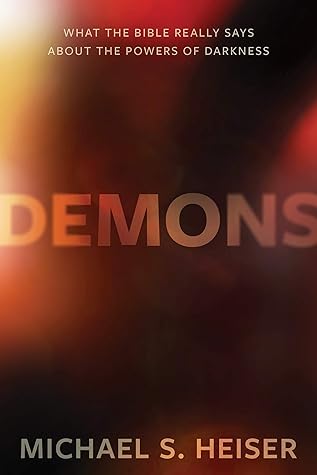More on this book
Kindle Notes & Highlights
The term demons has had a checkered history; in today’s theological usage the term denotes beings, often fallen angels, who are intrinsically evil and who do the bidding of their master, Satan. This definition, however, only became commonplace long after the Hebrew Bible was complete.2
Their rebellion did not mean they were no longer part of that world or that they became something other than what they were.
They are still spiritual beings. Rather, rebellion affected (and still characterizes) their disposition toward, and relationship to, Yahweh.
As the realm of the disembodied dead, this place has no literal latitude and longitude.
While the Old Testament credits God with sovereign oversight over the dead and the power to raise the dead, the realm of the dead is not equated with the presence of God.
“One who wanders from the way of good sense [i.e., one who is a fool, defined in Scripture as a wicked person or unbeliever] will rest in the assembly of the dead [rĕpāʾîm].” The fool misled by the wicked woman Folly into keeping company with her in her home “does not know that the dead [rĕpāʾîm] are there, that her guests are in the depths of Sheol” (Prov 9:18).
demons in the Second Temple era.19 Consequently there is a dark, sinister element to the Israelite conception of the Rephaim as inhabitants of the underworld.
If the hope of the righteous was removal from Sheol to everlasting life with God, then by definition those left to remain in Sheol would abide there with the evil spirits,
whose underworld residency is traced to supernatural rebellion.
The Hebrew root ʿ-b-r, behind the name Abarim, means “to cross over [from one side to another],” so the Qal participle ʿōbĕrîm means “those who cross over.”
Spronk notes that this participle “seems to have a special meaning in the context of the cult of the dead, denoting the spirits of the dead crossing the border between the land of the living and the world of the dead.”
The realm of the dead was filled with the spirits of the human wicked and other evil supernatural spirits.
English translations at times render this word as “medium,” which obscures something of note about its meaning. Several passages clearly have the terms referring to the spirit entities being channeled, not to the human channeler. Passages in Leviticus illustrate the point:
not turn to the spirits [ʾôbôt], to the ones who have knowledge [yiddĕʿōnî]; do not seek them out, and so make yourselves unclean by them: I am Yahweh your God. (Lev 19:31)
The point made here should not escape the reader. While yiddĕʿōnî, “knowing (one),” and ʾôb may at times be used of human mediums, the failure to note that they also refer specifically to supernatural entities results in missing Old Testament terminology for evil spirits.
The term mētîm could therefore be a distinct reference to spirit entities in the realm of the dead or perhaps a subset of yiddĕʿōnî and ʾôb.
The infernal ḥby is on Yahweh’s leash, subservient to his authority. He is therefore “demythologized” in terms of independent status.
They [the Israelites] sacrificed to demons [šēdîm] that were no gods [ʾĕlōah], to gods [ʾelōhı̂m] they had never known.
“Darkness [is] closely related to the concept of the wilderness.… The mythical understanding of the wilderness is often denoted by the notion that it is the habitat of strange animals and hostile demons.”62
As one scholar puts it, for Old Testament theology, the harmony of creation was “broken and permanently threatened by disorderly, supernatural beings and forces, hostile to God and humankind.”83
there is no indication in the Old Testament that Israelites presumed that would happen immediately at death.
In other words, the Old Testament theology of afterlife included hope
conveyed uncertainty about when the hoped-for release would occur.
Ancient Near Eastern texts make it quite clear that people living in biblical times parsed natural disasters mythically. Storms, earthquakes, diseases, famines, and the like were outbursts of divine wrath from a range of deities.
The short answer is “yes and no.” On the one hand, in biblical thought, everything that threatens life is the result of such rebellion. Natural disaster, disease, and death extend from humanity’s failure to
It is not preposterous to read Genesis 3 and conclude God has an ancient cosmic enemy who had evil intentions with respect to both God’s authority and human destiny.
For now, we note it as an initial point of connection between the Watchers, the fallen sons of God of Genesis 6:1–4, and the apkallu. Greenfield also makes the observation that the seven apkallu were created in “the river,” a reference to the primeval deep or underworld (or abyss, the realm of the dead) in Mesopotamian thought. Given the association of this cosmic location
malevolent spirits. The second option seems more
The implication is that the preflood apkallu that were completely divine correspond to the sons of God of Genesis 6:1–4 who cohabit with human women. As has been noted in several places in our
convey


